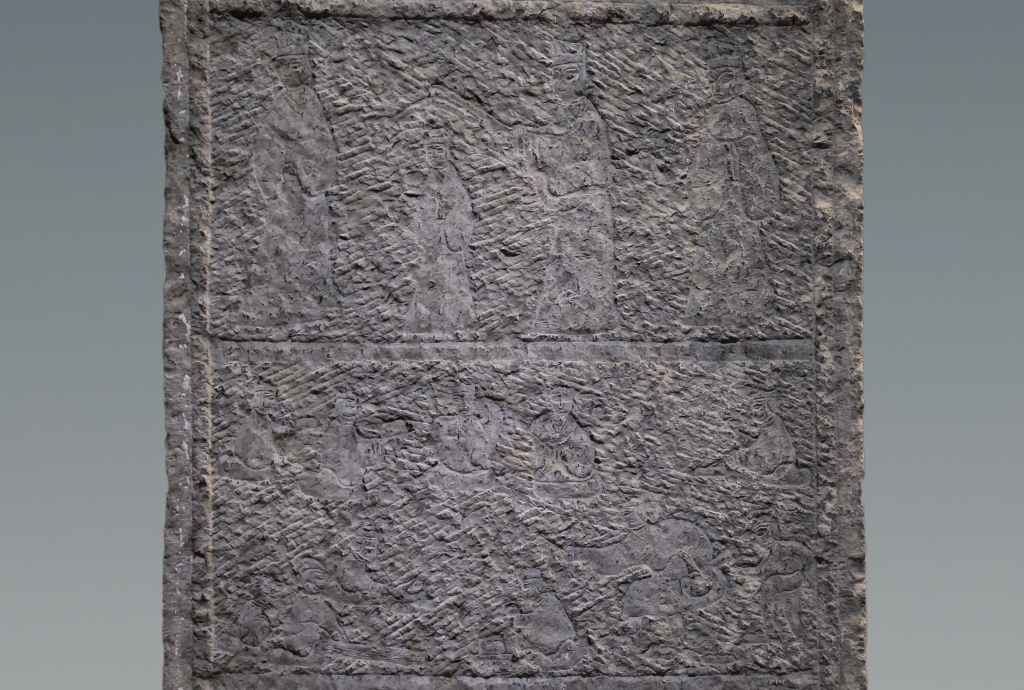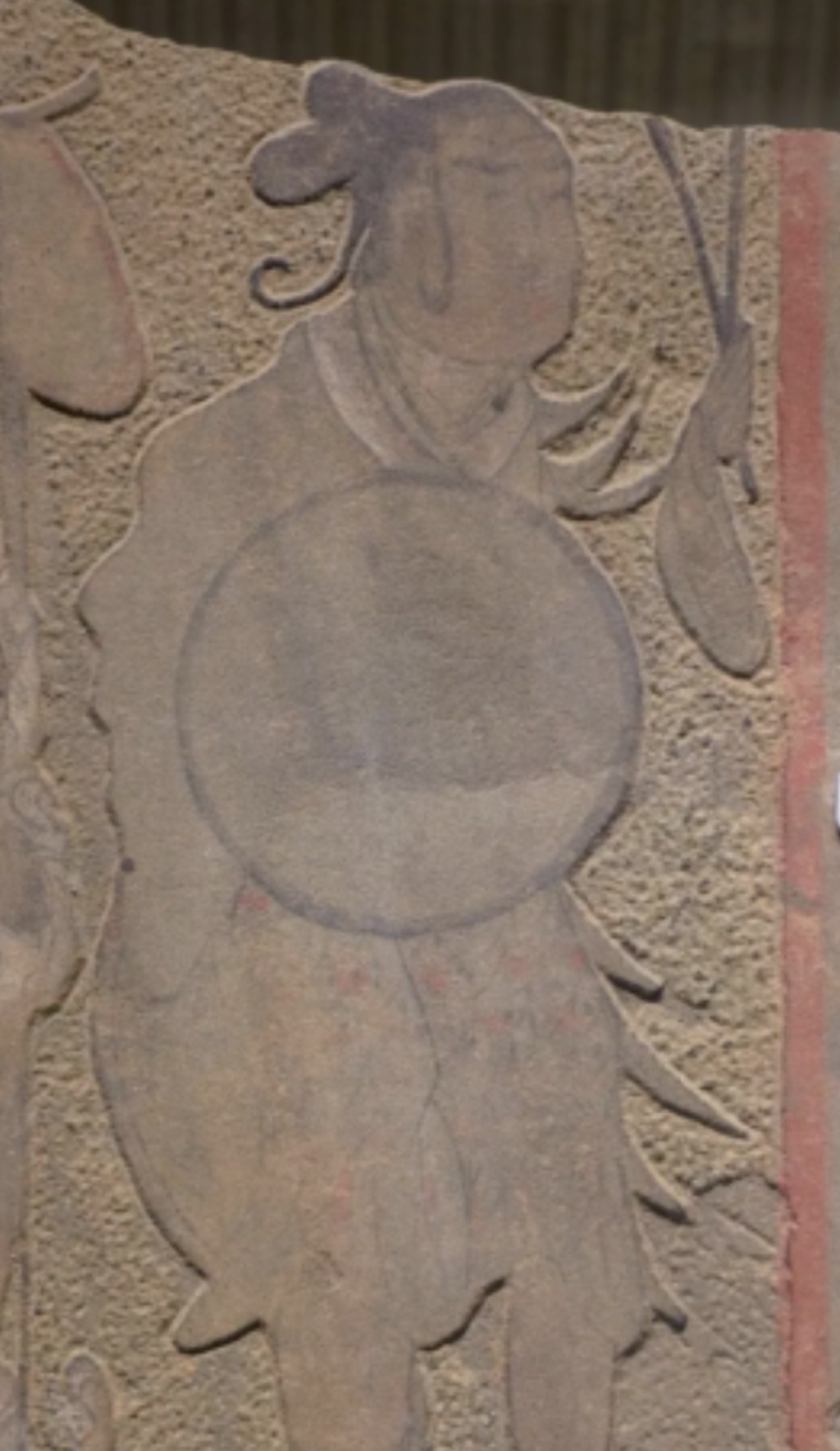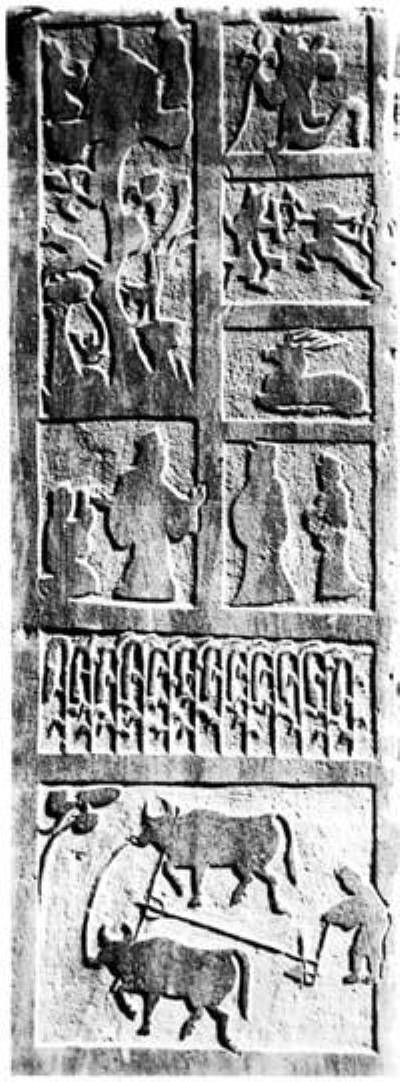
The cicadas begin to sing, the summer solstice comes quietly. As one of the earliest established solar terms among the 24 solar terms, the summer solstice has a pivotal position in Chinese culture. From an astronomical perspective, the sun shines directly over the Tropic of Cancer on this day, and the northern hemisphere welcomes the longest day, reflecting the ancient philosophical concept of the alternation of yin and yang and the reversal of things when they reach their extremes.
As a vivid carrier of traditional culture, folk art contains rich elements of the summer solstice. Whether it is ancient stone reliefs, paper-cuts, jade, wood carvings, bamboo carvings, etc., they all present the ideal of summer life in various forms.
Cooling off, lotus and phenology in cultural relics
Most of the ancient stone reliefs were created during the Han and Wei dynasties and are widely distributed in Shandong, Henan, Sichuan and other places. The contents cover myths and legends, historical stories, production and life, and many other aspects, just like a vivid historical scroll. In some stone reliefs, you can find depictions of astronomical phenomena related to the summer solstice. For example, some stone reliefs depict the image of the Big Dipper. The ancients determined the season by observing the direction of the handle of the Big Dipper. "When the handle points to the south, it is summer all over the world." At the summer solstice, the handle of the Big Dipper points to the south. This image element may be an implicit expression of the astronomical characteristics of the summer solstice.
As decorative stone carvings in funeral buildings of the Han Dynasty, the Han stone reliefs cover a wide range of themes, including social life, myths and legends, and natural landscapes. Although there are no "summer escape scenes" in the modern sense, the Han people integrated the ideal of summer escape into stone carving art through themes such as banquets, music and dance, leisure in waterside pavilions, and mythical wonderlands. For example, the stone reliefs unearthed in the 1950s from the Han tombs of Dongguan Village, Dongguan Town, Ju County, Shandong Province, are divided into three layers. The upper layer is a picture of Zhou Gong assisting King Cheng, and the middle layer is a picture of music and dance. In the upper left corner, two people hold noodles in their hands, and the two hosts who are watching the music are enjoying the coolness. In the lower left corner, three musicians are carved, one person in the upper right corner beats the drum, and one person in the lower right corner dances on the drum, with one person in front and behind each person.

A rectangular stone slab with reliefs from the Han Dynasty unearthed in Ju County (partial)
In addition, carvings of lotus and deer antlers are also mostly related to summer phenology. For example, the Han Dynasty stone relief "Crane, Fish and Lotus" in Xiaoxian County shows two cranes standing on the left and right, competing for fish, with lotus carved below, emerging from the mud without being stained.

Two Cranes Holding Fish and Lotus
"The first sign is that the antlers of deer fall off, the second sign is that cicadas begin to sing, and the third sign is that the summer solstice begins." This is the description of the three signs of the summer solstice by the ancients. In some stone reliefs in Shandong, it seems that we can find the shadows of these signs. For example, the stone relief unearthed from the Han Tomb of Dongliugong Village in Fushan, Shandong, the central pattern is two deer lying head to head, occupying the center and most of the position of the picture, with fine details, the deer heads have horns, the facial features and the stripes on the body are clearly visible, and the posture is peaceful and tranquil.

Two deer lying facing each other in a Shandong stone relief
In the jade carvings and ceramics of folk art, there are many patterns that reflect summer lotus. For example, the jade lotus collected by the National Palace Museum in Taipei is made up of three lotus pods connected together, wrapped in lotus leaves and curly branches. The whole body is transparent and green, which is extremely refreshing.

Jade Lotus
Lotus petals first appeared in Six Dynasties celadon. For example, a green-glazed lotus vase uses lotus as the main decorative pattern. The decorative techniques such as relief, molding, and engraving are concentrated on one vessel, and the lotus pattern is appropriately decorated on each part, either facing up or down, high or low, cleverly interspersed, echoing up and down, creating an artistic shape; in the Yuan Dynasty blue and white lotus pond mandarin duck pattern, the lotus is shaped like full ears of wheat, the algae have ripples, and the mandarin ducks chase each other, which is full of interest; the Qing Dynasty blue and white lotus pattern flat pot is painted with blue and white patterns throughout the vessel, the neck is decorated with flower and leaf patterns, and the abdomen is decorated with turning lotus patterns, which gives a sense of clarity.

Blue and white lotus pattern flat pot
Cicada chirping and breeze in folk sculptures
There is a poem by Wang Wei that says "the chirping of cicadas makes the forest even quieter." In the brilliant galaxy of folk art, cicadas shine with unique brilliance in fields such as jade and wood carvings with their rich cultural connotations and exquisite artistic expressions.
As early as the Neolithic period, the jade cicadas in the Shijiahe culture had already shown a unique charm. They were short, flat, and wide, with a slightly narrow waist. The shape was abstract and exaggerated, but it vividly captured the charm of the cicada. In the Han Dynasty, the production of jade cicadas reached a brilliant stage. Most of the jade cicadas in the Han Dynasty were used as burial objects. The ancients regarded the eclosion of the cicada as rebirth, hoping that the soul of the dead could rest in peace and be reincarnated. The jade cicadas of the Han Dynasty mainly include tongue-shaped, teardrop-shaped, and finely carved cicadas. They are exquisitely made and have full and vivid shapes.

Jade Cicada of the Han Dynasty
In the thousands of years of inheritance of folk art, bamboo carvings, wood carvings and brick carvings, with their unique materials and exquisite craftsmanship, have preserved many excellent works on the themes of summer cooling off and enjoying the cool air. These works are like slices of time, vividly showing the leisurely time people spent in the hot summer in the past.
Bamboo carving art has a long history. Literati and scholars often love bamboo because of its elegant taste of "I would rather eat without meat than live without bamboo". Bamboo carvings often reveal a fresh and elegant state. A bamboo-carved pen holder with a small scene of a lotus pond from the Qing Dynasty has a small scene of a lotus pond carved on the outer wall. The lotus flowers are in different postures and full of vitality. On the lotus leaves, frogs, spiders and crabs are either living or crawling, with cute shapes, vividly presenting the unique style of the lotus pond in summer, making people feel as if they can feel the wisps of cool water vapor by the lotus pond and the gentle charm of the summer in the water town of Jiangnan.

Detail of a bamboo-carved pen holder depicting a small lotus pond

Jiading Bamboo Carving: Summer Pavilion Brush Holder (Wang Wei)
"Pavilion Summer Brush Holder" is one of the representative works of Wang Wei, a representative inheritor of Jiading bamboo carving, a national intangible cultural heritage, showing the unique style of Jiading bamboo carving "using knife instead of pen, calligraphy and painting into bamboo". Based on the theme of traditional literati paintings, this work depicts the leisurely scenes of ancient people enjoying the coolness, appreciating the scenery, and drinking tea in the pavilion. The knife technique is delicate and the composition is sparse, combining the elegance of literati and the beauty of craftsmanship.
The coolness of summer solstice in paper-cut
If the ancient stone reliefs are the frozen history, then the folk paper-cuts are the vivid sketches of life, which use simple and bright lines and bright colors to outline people's love for life and their unique perception of the solar terms. In the folk paper-cut art, there are many works on the theme of the summer solstice, which are often exquisitely composed and rich in meaning.
Under the scissors of folk paper-cutting artists, vivid summer cool-down pictures are constructed with elements of farm life, cicadas, watermelons, fans and other summer life objects. For example, "Summer Solstice: Bamboo Weaving a Dream of Abundance" is a paper-cutting work created by Qian Bingrong, a representative inheritor of Shanghai-level intangible cultural heritage. It interprets the solar term culture with traditional craftsmanship and integrates natural interest with humanistic feelings. Abundant life: Through the practical functions of bamboo woven objects (such as fans, mats, and baskets), it expresses the wisdom and vision of our ancestors to adapt to the weather and create a better life24.

"Summer Solstice: Bamboo Weaving a Dream of Abundance", Intangible Cultural Heritage Inheritor Qian Bingrong
In the folk paper-cut "Summer Solstice", a cicada is carved lying on a willow branch, flapping its wings as if about to chirp. Its wings, as thin as gauze, are portrayed so lifelike that you can almost hear the music it is playing in the summer. A strong atmosphere of the summer solstice is palpable.

"Summer Solstice" Paper Cutting Works by Jiang Feng

“Summer Solstice” paper-cut work, Shi Ping


